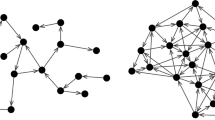Abstract
Fodor and Pylyshyn (1988) argue that any successful model of cognition must use classical architecture; it must depend upon rule-based processing sensitive to constituent structure. This claim is central to their defense of classical AI against the recent enthusiasm for connectionism. Connectionist nets, they contend, may serve as theories of the implementation of cognition, but never as proper theories of psychology. Connectionist models are doomed to describing the brain at the wrong level, leaving the classical view to account for the mind.
This paper considers whether recent results in connectionist research weigh against Fodor and Pylyshyn's thesis. The investigation will force us to develop criteria for determining exactly when a net is capable of systematic processing. Fodor and Pylyshyn clearly intend their thesis to affect the course of research in psychology. I will argue that when systematicity is defined in a way that makes the thesis relevant in this way, the thesis is challenged by recent progress in connectionism.
Similar content being viewed by others
References
Allen, R.: 1990,Connectionist Language Users, Technical Report TR-AR-90-402, Bell Communication Research.
Bechtel, W.: 1988, ‘Connectionism and Rules and Representation Systems: Are They Compatible?’,Philosophical Psychology 1, 5–15.
Chalmers, D.: 1990, ‘Why Fodor and Pylyshyn Were Wrong: The Simplest Refutation’,Proceedings of the Twelfth Annual Conference of the Cognitive Science Society, pp. 340–7.
Elman, J.: 1989,Representation and Structure in Connectionist Models, Technical Report CRL 8903. UCSD: Center for Research in Language.
Fodor, J. and Pylyshyn, Z.: 1988, ‘Connectionism and Cognitive Architecture: A Critical Analysis’,Cognition 28, 3–71.
Garson, J.: ‘Representation Without Realism’. (forthcoming).
Horgan, T. and J. Tienson: 1989, ‘Representations without Rules’,Philosophical Topics 17, 147–74.
McCauley, J.: 1987, ‘Chaotic Dynamical Systems as Machines’, in H. Haken (ed.),Computational Systems — Natural and Artificial, Springer Verlag, New York, pp. 188–95.
Rumelhart, D., J. McClelland and the PDP Research Group: 1986,Parallel Distributed Processing, vol. 1. MIT Press, Cambridge.
Servan-Schreiber, D., Cleeremans, A., and McClelland, J.: 1989, ‘Encoding Semantical Structure in Simple Recurrent Nets’, in D. Touretzsky (ed.),Advances in Neural Information Processing Systems I, Kaufmann, San Fransisco, pp. 643–52.
Smolensky, P.: 1987,On Variable Binding and the Representation of Symbolic Structures in Connectionist Systems, Technical Report CU-CS-355-87, University of Colorado at Boulder, Department of Computer Science.
Smolensky, P.: 1988, ‘On the Proper Treatment of Connectionism’,Behavioral and Brain Sciences 11, 1–74.
Stolcke, A.: 1990,Learning Feature—Based Semantics with Simple Recurrent Networks, Technical Report TR-90-015, International Computer Science Institute, Berkeley, California.
van Gelder, T.: 1990, ‘Compositionality: Variations on a Classical Theme’,Cognitive Science 14, 355–84.
Author information
Authors and Affiliations
Rights and permissions
About this article
Cite this article
Garson, J.W. Cognition without classical architecture. Synthese 100, 291–305 (1994). https://doi.org/10.1007/BF01063812
Issue Date:
DOI: https://doi.org/10.1007/BF01063812




